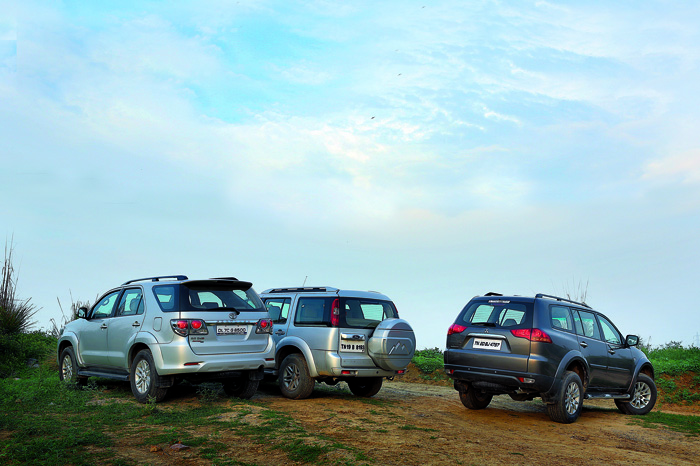The new Pajero Sport is the latest addition to the company’s SUV portfolio, and the company has dug deep to raise the bar higher than before with this latest iteration. Testament to this is the inclusion of a diesel engine and a proper four-wheel-drive system, which gives it a leg up on the Outlander.
But the Pajero Sport has two very strong rivals to contend with; the Toyota Fortuner and the Ford Endeavour. The former has a lot going for it and is also a few lakhs cheaper, making it a very tempting option. The Endeavour also has plenty of fight left in it to give the Pajero Sport a hard time. So does it have what it takes to see off the tough competition?
Design & engineering
The Endeavour is the oldest SUV here and it looks too. Ford had given it a facelift to soften its boxy looks, with winged headlights, a new bonnet and a different front bumper, but even that update was some years back. That said, it’s still got loads of road presence, which is no doubt helped by its sheer length.
But even with its luxury liner length, the Endeavour can’t quite match the Fortuner’s imposing stance. The headlamps and chrome grille that were restyled earlier this year make it look like a mini-Land Cruiser, while the sharply raked C pillars give it a distinctive glasshouse.
The Pajero Sport has a nose that looks like it’s been grafted on from the Pajero Evo rally car, and it gets its share of attention, but the rest of the body has a very sophisticated and understated air to it. Viewed in profile, though, the Sport’s stubby bonnet and large cabin don’t look cohesive. The large wheel-to-wheelarch clearance gives the impression that the Sport is hoisted on stilts.
The three SUVs come with serious off-road hardware, including low-range transfer cases and lockable central differentials. But where the Fortuner runs a full-time four-wheel-drive system, the Sport and Endeavour give you the more fuel-economy-friendly option of switching to just rear-wheel drive.
Front ventilated disc brakes and rear drums can be found on all three, as can ABS and EBD. The Fortuner also comes with Vehicle Stability Control, which uses the braking system to keep the vehicle on the desired path. However, the Endeavour is the only SUV to offer a pair of side airbags in addition to the dual front airbags that are standard on this trio.



